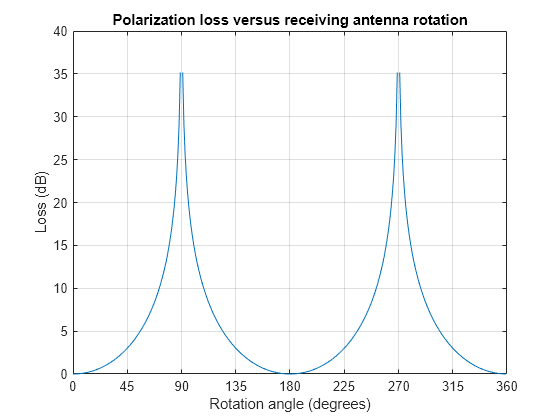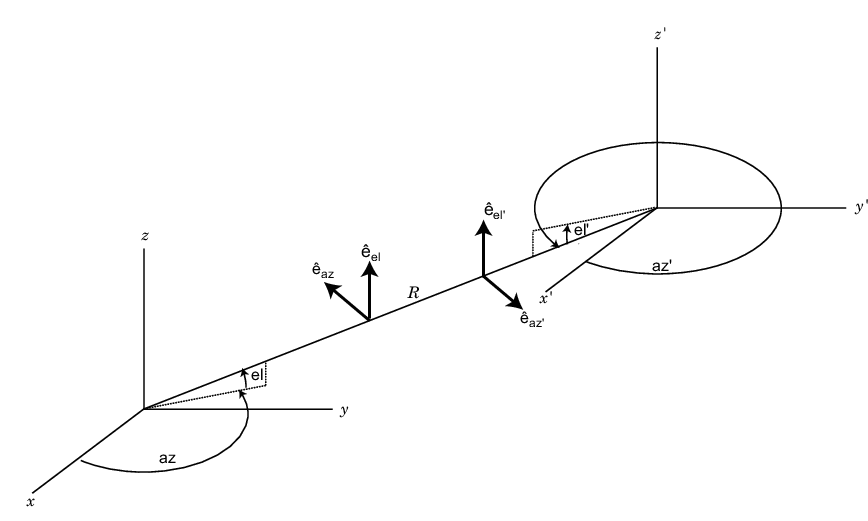polloss
Polarization loss
Syntax
Description
rho = polloss(fv_tr,fv_rcv)fv_tr, and the polarization
of the receiving antenna, fv_rcv. The field
vector lies in a plane orthogonal to the direction of propagation
from the transmitter to the receiver. The transmitted field is represented
as a 2-by-1 column vector [Eh;Ev]. In this vector, Eh and Ev are
the field’s horizontal and vertical linear polarization components
with respect to the transmitter’s local coordinate system.
The receiving antenna’s polarization is specified by a 2-by-1
column vector, fv_rcv. You can also specify this
polarization in the form of [Eh;Ev] with respect
to the receiving antenna’s local coordinate system. In this
syntax, both local coordinate axes align with the global coordinate
system.
rho = polloss(fv_tr,fv_rcv,pos_rcv,axes_rcv)axes_rcv.
These axes define the receiver's local coordinate system as a 3-by-3
matrix. The first column gives the x-axis of the
local system with respect to the global coordinate system. The second
and third columns give the y and z axes,
respectively. This syntax can use any of the input arguments in the
previous syntaxes.
rho = polloss(fv_tr,fv_rcv,pos_rcv,axes_rcv,pos_tr,axes_tr)axes_tr. These
axes define the transmitter's local coordinate system as a 3-by-3
matrix. The first column gives the x-axis of the
local system with respect to the global coordinate system. The second
and third columns give the y and z axes,
respectively. This syntax can use any of the input arguments in the
previous syntaxes.
Examples
Input Arguments
Output Arguments
More About
References
[1] Mott, H. Antennas for Radar and Communications.John Wiley & Sons, 1992.
Extended Capabilities
Version History
Introduced in R2013a

